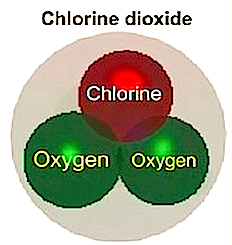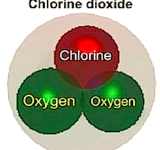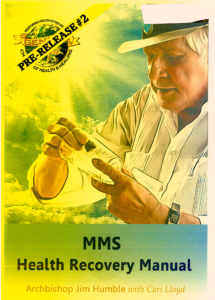Home / Chlorine Dioxide for Water Treatment
The Niagara Falls, New York Water
Treatment Plant First Used
Chlorine Dioxide For Drinking
Water Treatment In 1944.
Chlorine dioxide will not lose
its effectiveness over time.
Meaning that bacteria will
not grow resistant to it.

 Congressional Research Service
Congressional Research Service
Safe Drinking Water Act (SDWA):
A Summary of the Act and Its Major Requirements
President Gerald Ford – 1973-1974

…Washington was supposed to be the backstop for chemicals like perchlorate.
Toxins are supposed to be managed under the Safe Drinking Water Act, the 1974 law that Congress passed after scientists discovered widespread contamination in American tap water. Under the law, the EPA has set national limits for 89 dangerous chemicals, bacteria and viruses. But nearly all of those limits were set between 1986 and 1996, when Congress required the EPA to analyze and regulate chemicals at a steady clip. In the 20 years since that update went into effect, not a single new contaminant has been regulated under the law.


⇑ RECOMMENDED ⇑





ClO2 played the role of hero in 2001 when it was
used to destroy deadly spores of the bacterium Bacillus
anthracis in the U.S.
Hart Senate Office Building in Washington, D.C.
(Many people call the bacterium “anthrax,” but in fact,
anthrax is the name of the disease caused by
Bacillus anthracis, the bacterium.) ClO2.
ClO2.

This is an edited version below. Full version⇒ HERE
Chlorine dioxide is a chemical compound with the formula ClO2. This yellowish-green gas crystallizes as bright orange crystals at −59 °C. As one of several oxides of chlorine, it is a potent and useful oxidizing agent used in water treatment and in bleaching.[4]
The two resonance structures
Chlorine dioxide is a neutral chlorine compound.
It is very different from elementary chlorine, both in its chemical structure and in its behaviour.
One of the most important qualities of chlorine dioxide is its high water solubility, especially in cold water.
Chlorine dioxide does not hydrolyze when it enters water; it remains a dissolved gas in solution. Chlorine dioxide is approximately 10 times more soluble in water than chlorine.
The molecule ClO2 has an odd number of valence electrons, and therefore, it is a paramagnetic radical. Its electronic structure has long baffled chemists because none of the possible Lewis structures is very satisfactory. In 1933, L. O. Brockway proposed a structure that involved a three-electron bond.[6] Chemist Linus Pauling further developed this idea and arrived at two resonance structures involving a double bond on one side and a single bond plus three-electron bond on the other.[7] In Pauling’s view the latter combination should represent a bond that is slightly weaker than the double bond. In molecular orbital theory this idea is commonplace if the third electron is placed in an anti-bonding orbital. Later work has confirmed that the HOMO is indeed an incompletely-filled orbital.[8]
Preparation [edit]
Chlorine dioxide is a compound that can decompose extremely violently when separated from diluting substances. As a result, preparation methods that involve producing solutions of it without going through a gas-phase stage are often preferred.
Arranging handling in a safe manner is essential.
Pulp bleaching
Over 95% of the chlorine dioxide produced in the world today is made from sodium chlorate and is used for pulp bleaching. It is produced with high efficiency by reducing sodium chlorate in a strong acid solution with a suitable reducing agent such as, hydrogen peroxide, hydrochloric acid or sulfur dioxide.[10] Modern technologies are based on methanol or hydrogen peroxide, as these chemistries allow the best economy and do not co-produce elemental chlorine
The commercially more important production route uses methanol as the reducing agent and sulfuric acid for the acidity. Two advantages of not using the chloride-based processes are that there is no formation of elemental chlorine, and that sodium sulfate, a valuable chemical for the pulp mill, is a side-product. These methanol-based processes provide high efficiency and can be made very safe.[10]
Disinfectant
A much smaller, but important, market for chlorine dioxide is for use as a disinfectant. Since 1999 a growing proportion of the chlorine dioxide made globally for water treatment and other small-scale applications has been made using the chlorate, hydrogen peroxide and sulfuric acid method, which can produce a chlorine-free product at high efficiency. Traditionally, chlorine dioxide for disinfection applications has been made by one of three methods using sodium chlorite or the sodium chlorite – hypochlorite method:
2 NaClO2 + 2 HCl + NaOCl → 2 ClO2 + 3 NaCl + H2O
or the sodium chlorite – hydrochloric acid method:
5 NaClO2 + 4 HCl → 5 NaCl + 4 ClO2 + 2 H2O
All three sodium chlorite chemistries can produce chlorine dioxide with high chlorite conversion yield, but unlike the other processes the chlorite-HCl method produces completely chlorine-free chlorine dioxide, although it suffers from the requirement of 25% more chlorite to produce an equivalent amount of chlorine dioxide. Alternatively, hydrogen peroxide may be efficiently used in small-scale applications.[10]
Handling properties[edit]
At gas-phase concentrations greater than 30% volume in air at STP (more correctly: at partial pressures above 10 kPa[10]), ClO2 may explosively decompose into chlorine and oxygen. The decomposition can be initiated by, for example, light, hot spots, chemical reaction, or pressure shock. Thus, chlorine dioxide gas is never handled in concentrated form, but is almost always handled as a dissolved gas in water in a concentration range of 0.5 to 10 grams per liter. Its solubility increases at lower temperatures, thus it is common to use chilled water (5 °C, or 41 °F) when storing at concentrations above 3 grams per liter. In many countries, such as the United States, chlorine dioxide gas may not be transported at any concentration and is almost always produced at the application site using a chlorine dioxide generator.[10] In some countries,[which?] chlorine dioxide solutions below 3 grams per liter in concentration may be transported by land, however, they are relatively unstable and deteriorate quickly.
Uses
Chlorine dioxide is used for bleaching of wood pulp and for the disinfection (called chlorination) of municipal drinking water.[12][13]:4-1[14] As a disinfectant it is effective even at low concentrations because of its unique qualities.[5]
Bleaching – Chlorine dioxide currently is the most important bleaching method worldwide.
Chlorine dioxide is sometimes used for bleaching of wood pulp in combination with chlorine, but it is used alone in ECF (elemental chlorine-free) bleaching sequences. It is used at moderately acidic pH (3.5 to 6). The use of chlorine dioxide minimizes the amount of organochlorine compounds produced.[15] Chlorine dioxide (ECF technology) currently is the most important bleaching method worldwide. About 95% of all bleached Kraft pulp is made using chlorine dioxide in ECF bleaching sequences.[16]
Chlorine dioxide is also used for the bleaching of flour.
Water chlorination[edit]
The Niagara Falls, New York, water treatment plant first used chlorine dioxide for drinking water treatment in 1944 for phenol destruction.[13]:4–17[14] Chlorine dioxide was introduced as a drinking water disinfectant on a large scale in 1956, when Brussels, Belgium, changed from chlorine to chlorine dioxide.[14] Its most common use in water treatment is as a pre-oxidant prior to chlorination of drinking water to destroy natural water impurities that would otherwise produce trihalomethanes on exposure to free chlorine.[17][18][19] Trihalomethanes are suspect carcinogenic disinfection by-products[20] associated with chlorination of naturally occurring organics in the raw water.[19] Chlorine dioxide is also superior to chlorine when operating above pH 7,[13]:4–33 in the presence of ammonia and amines[citation needed]and/or for the control of biofilms in water distribution systems.[19] Chlorine dioxide is used in many industrial water treatment applications as a biocide including cooling towers, [ Dr Greg Simpson → Management of Biofilm ] ← process water, and food processing.[21]
Chlorine dioxide is less corrosive than chlorine and superior for the control of legionella bacteria.[14][22] Chlorine dioxide is superior to some other secondary water disinfection methods in that chlorine dioxide:
1) is an EPA registered biocide,
2) is not negatively impacted by pH,
3) does not lose efficacy over time (the bacteria will not grow resistant to it) and
4) is not negatively impacted by silica and phosphate, which are commonly used potable water corrosion inhibitors.
It is more effective as a disinfectant than chlorine in most circumstances against waterborne pathogenic agents such as viruses,[23] bacteria and protozoa – including the cysts of Giardia and the oocysts of Cryptosporidium.[13]:4-20–4-21
The use of chlorine dioxide in water treatment leads to the formation of the by-product chlorite, which is currently limited to a maximum of 1 ppm in drinking water in the USA.[13]:4–33 This EPA standard limits the use of chlorine dioxide in the USA to relatively high-quality water[why?], or water that is to be treated with iron-based coagulants (iron can reduce chlorite to chloride).[citation needed]
Chlorine dioxide has many applications as an oxidizer or disinfectant.[5] Chlorine dioxide can be used for air disinfection[24] and was the principal agent used in the decontamination of buildings in the United States after the 2001 anthrax attacks.[25] After the disaster of Hurricane Katrina in New Orleans, Louisiana, and the surrounding Gulf Coast, chlorine dioxide has been used to eradicate dangerous mold from houses inundated by the flood water.[26] Because of its unique qualities, chlorine dioxide is an effective disinfectant even at low concentrations.[27]
Other disinfection uses[edit]
Sometimes chlorine dioxide is used as a fumigant treatment to “sanitize” fruits such as blueberries, raspberries, and strawberries that develop molds and yeast.[citation needed]
Chlorine dioxide is used for the disinfection of endoscopes, such as under the trade name Tristel.[28] It is also available in a “trio” consisting of a preceding “pre-clean” with surfactant and a succeeding “rinse” with deionised water and low-level antioxidant.[29]
Chlorine dioxide also is used for control of zebra and quagga mussels in water intakes.[13]:4–34
Chlorine dioxide also was shown to be effective in bedbug eradication.[30]
Other uses[edit]
Chlorine dioxide is used as an oxidant for phenol destruction in waste water streams and for odor control in the air scrubbers of animal byproduct (rendering) plants.[13]:4–34 It is also available for use as a deodorant for cars and boats, in chlorine dioxide generating packages that are activated by water and left in the boat or car overnight.
Safety issues in water and supplements [edit]

Chlorine dioxide, can inactivate or kill active, dormant and spore forming microorganisms.
Unlike conventional biocides, microorganisms do not build a resistance to chlorine dioxide, and it has a low residual toxicity and produces benign end products. Chlorine dioxide is therefore an efficacious biocide,
Pre-release # 2, Full text ⇓
⇒ MMS ⇐





 ClO2.
ClO2. 








